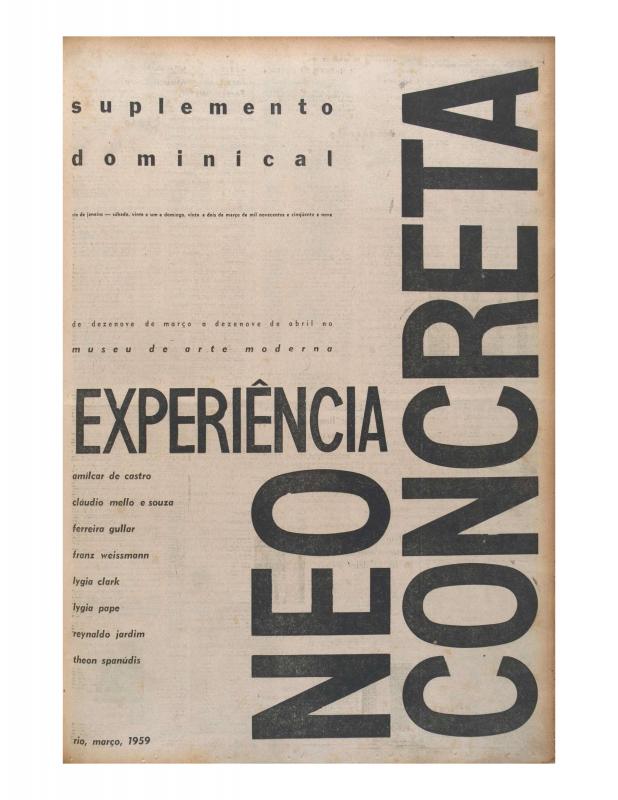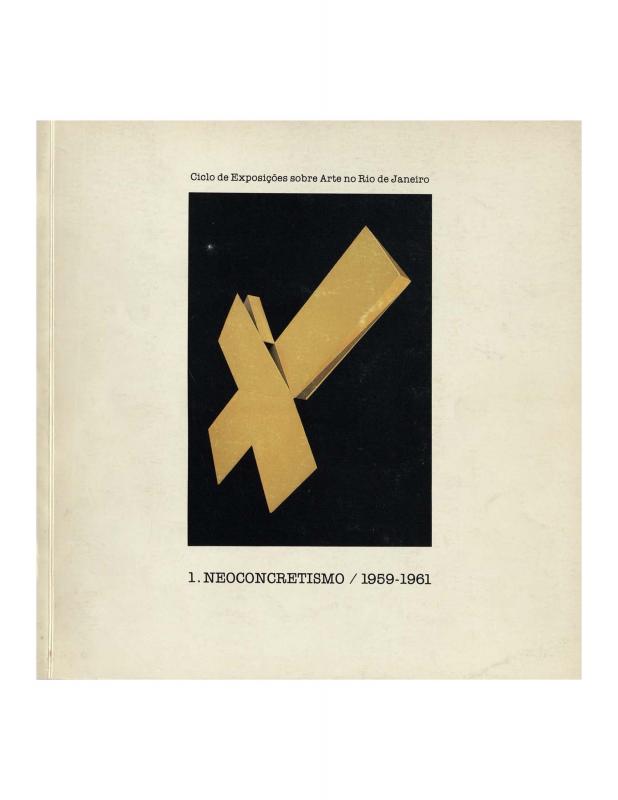As he mentions in his essay, the critic Ferreira Gullar (1930–2016) agreed with the Neo-Concrete group’s basic principles. After his essay “Teoría del No-objeto” [see the ICAA Digital Archive (doc. no. 1091374)] appeared in the Sunday Supplement of the Jornal do Brasil (December 19–20, 1959), he became the movement’s theorist.
This polemical essay is an example of the debates that raged between Concrete artists in São Paulo and their Neo-Concrete challengers in Rio de Janeiro (see doc. no. 1315102">1315102). It was originally published in the Rio de Janeiro newspaper Jornal do Brasil on August 13, 1960. The text appeared in Projeto Construtivo Brasileiro na Arte, the catalogue for the exhibition organized in São Paulo by Aracy Amaral (b. 1930) and Lygia Pape (1927–2004). The event was hugely influential in Brazil, prompting an innovative reading of the meaning of the rationalist movements in Brazilian art. The exhibition was presented in 1977 at the Pinacoteca do Estado de São Paulo and, later on, at the MAM-RJ (Museu de Arte Moderna do Rio de Janeiro).
[For more information about this exhibition, see the following in the ICAA Digital Archive: “Projeto construtivo brasileiro na arte” (doc. no. 1110680) by Pape; “A arquitetura é a grande arte de nosso tempo —1948: Romero Brest em São Paulo” (doc. no. 1314972) by
Jorge Romero Brest; and “O problema da educação artística depois da Bauhaus” (doc. no. 1315069) by Tomás Maldonado.]
[For other writings by Ferreira Gullar, see the following in the ICAA Digital Archive: “Manifesto Neoconcreto” (doc. no. 1110328); “Do quadro ao não-objeto” (doc. no. 1091272); “Cor e estrutura-cor” (doc. no. 1091219); “Concretos de São Paulo no MAM” (doc. no. 1315102">1315102); “Arte Concreta” (doc. no. 1315020); “Da arte concreta à arte neoconcreta” (doc. no. 1315036); “Arte neoconcreta, uma contribuição brasileira” (doc. no. 1315052); and “Arte neoconcreta: uma experiência radical” (doc. no. 1315414).]












